-
Car Reviews
- All reviews
- Midsize SUVs
- Small cars
- Utes
- Small SUVs
- Large SUVs
- Large cars
- Sports SUVs
- Sports cars
- Vans
Latest reviews
- Car News
-
Car Comparisons
Latest comparisons
- Chasing Deals
Longer-range economy, quieter, cheaper and still fit enough for most needs. The 1.9L has its positives, but is it enough to sway you from a full-fat 3.0L version?
You’ve gotta feel a bit sorry for the 2024 Isuzu MU-X wagon.
Gaze across at its more popular D-Max ute sibling and you see it’s being showered in upgrades. But the MU-X? There’s sweet bugger all, at least for right now…except for the addition of an entirely new engine option.
Added choice is great, but the 110kW/350Nm 1.9L turbo-diesel four-cylinder does feel bit like the Christmas present we didn’t ask for. The natively detuned 140kW/450Nm 3.0L, of the same aspiration and cylinder count, already touts some of the more modest outputs in its class.
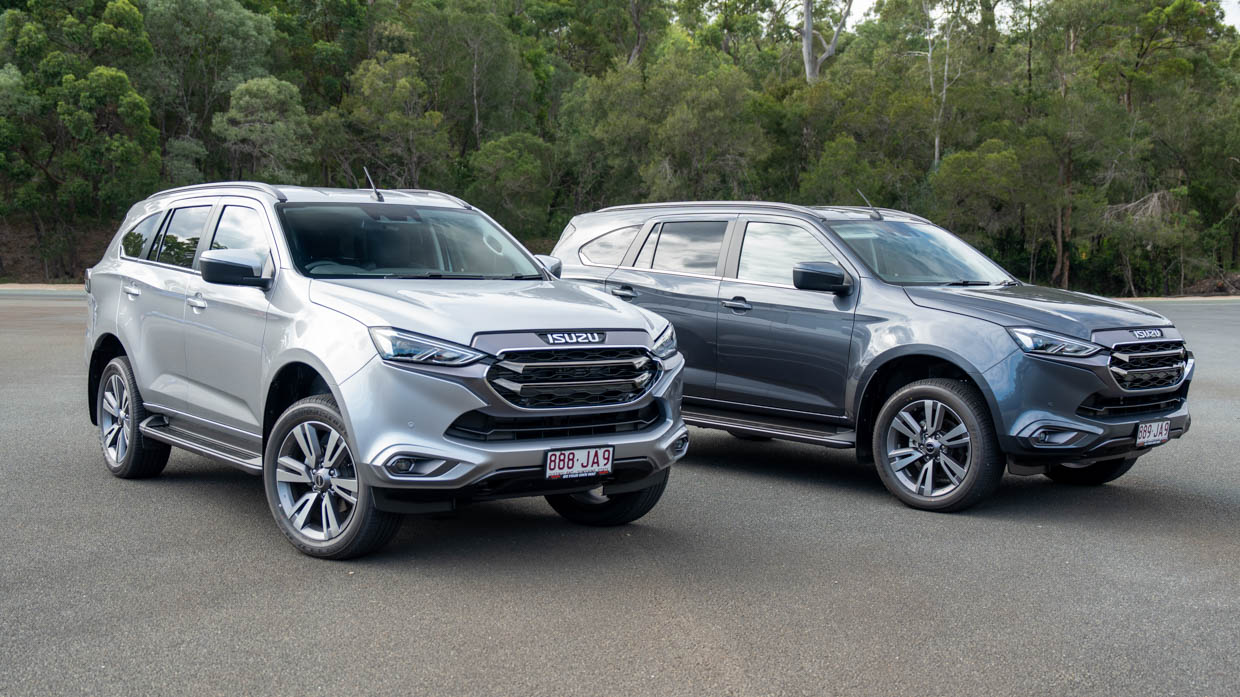
Did we really need a less-powerful option, Isuzu?
Such an assessment would be unfair and ignores the many benefits of the 1.9L, namely advertised fuel economy improvements and also a $2000 price saving over variants using the larger donk. Admittedly, though, this does come off the back of a price rise that saw much of the range increase by between $500 and $2000.
Many might remember how attainable the previous-generation MU-X was prior to the arrival of the current generation, which it must be said is much safer, more capable, and a better all-round vehicle, but the sting of abandonment is still felt by some buyers, I’m sure.
With rampant inflation abound, the addition of a more affordable engine option is a welcome move from Isuzu, and depending on your requirement it could be a better choice than the mainstay 3.0L turbo-diesel.
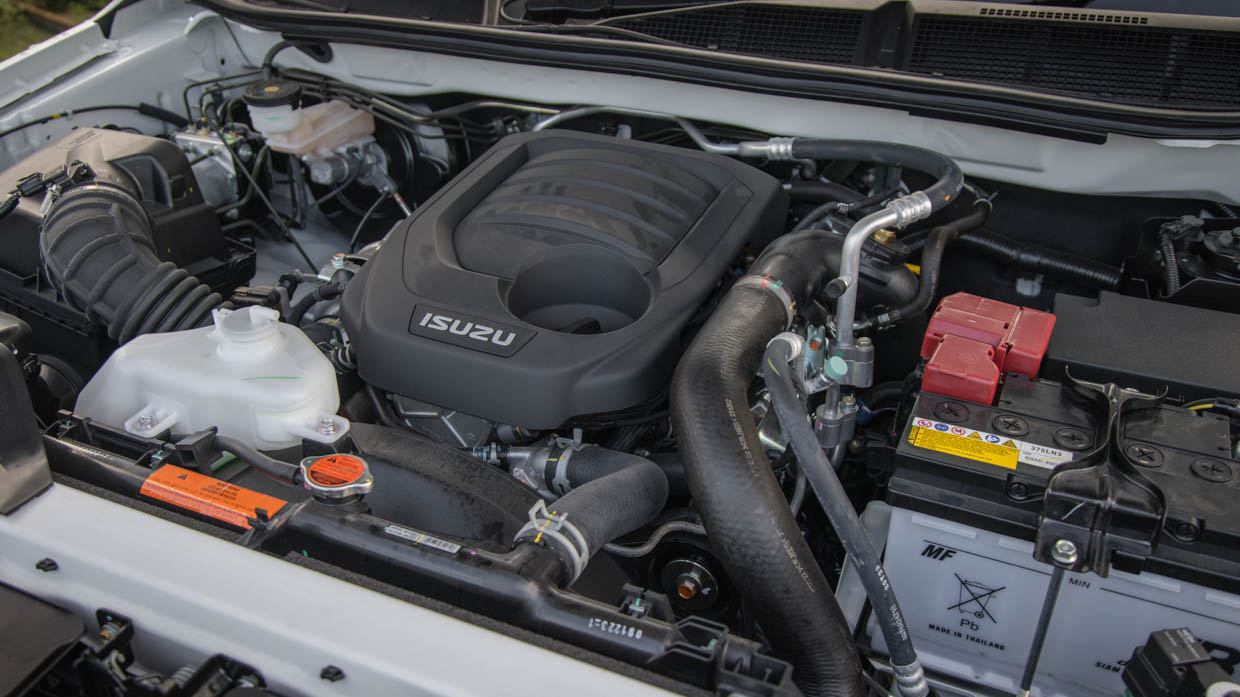
There are no equipment changes between variants using the two different engine types, save for the lack of a ‘3.0TD’ badge on the tailgate of the MU-X.
Pricing starts from $47,400 for the LS-M in 1.9L 4×2 guise, or $53,400 for the 4×4. The flagship LS-T 3.0L 4×4 is offered with a keen $67,990 national driveaway price.
Standard equipment on the base LS-M includes the following:
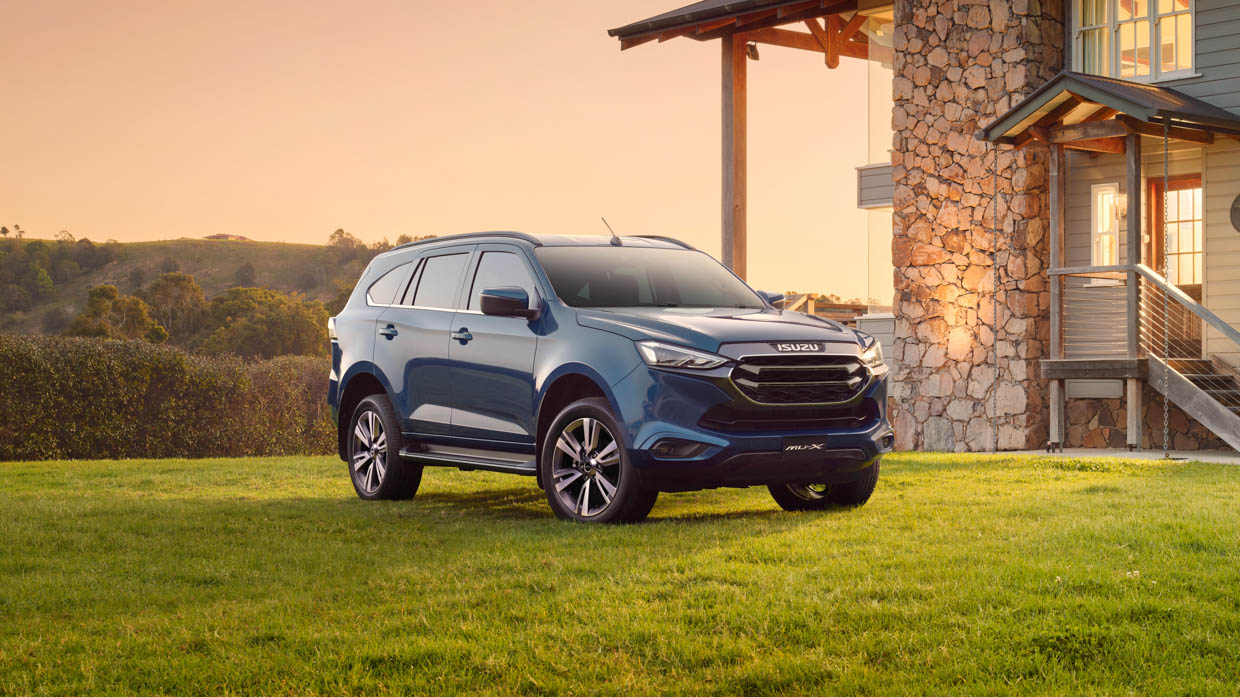
Stepping up to the LS-U adds:
Finally, the flagship LS-T adds:
To describe the 1.9L we must first understand the larger 3.0L, which is by nature a modest performer but one that is remarkably unbothered when truly challenged by heavy towing, climbing big hills with a full complement of passengers, or just tackling some tricky off-roading.
In many ways Isuzu’s evergreen 3.0L feels similar to the 4.5L turbo-diesel V8 found in the Toyota Land Cruiser 70 Series in that respect, which is a good thing.
Still, it’s not hard to believe the 3.0L’s close-ties to Isuzu’s commercial division because this oiler is a rowdy unit. It’s more excusable in the blue collar D-Max but here in the family-focussed MU-X you can be excused for craving a bit more refinement.
Thankfully the 1.9L unit brings some significant improvement to the MU-X on this front, with the smaller engine quite hushed throughout the rev range.

With a fairly average peak torque of just 350Nm – some 66Nm less than a Hyundai Tucson diesel softroader – it would be fair to assume any refinement would be lost by the fact the smaller engine would be revving harder, more often, than the 3.0L. But you’d be wrong.
The 1.9L’s greatest strength is its ample mid-range torque band. Peak torque is available between 1800-2600rpm, but Isuzu says more than 300Nm is available across 71 percent of the available rev range.
Twin-turbo setups from Ford and Mitsubishi are smoother, but the single-turbocharged Isuzu 1.9L does a good job for what it is. Thankfully, it lacks that kick in the back that the off-and-on torque delivery of the 3.0L is known for.
If your driving is exclusively restricted to urban areas and long stretches of road at 110km/h, this new engine may actually be the better choice, but the lazy on-ramp transition between the two is likely more than long enough to make you think about the extra $2000 you could have spent and the extra 100Nm that would have unlocked.
In off-road situations the mid-range capability of the 1.9L reveals a vehicle that isn’t overly peaky, as some overly strung small-displacement engines can be.
Still, I can’t help thinking that in situations where raw grunt is called upon, like towing a caravan out of the beach, I’d rather have more torque than what’s on offer here. Still, your particular use case may not demand this.
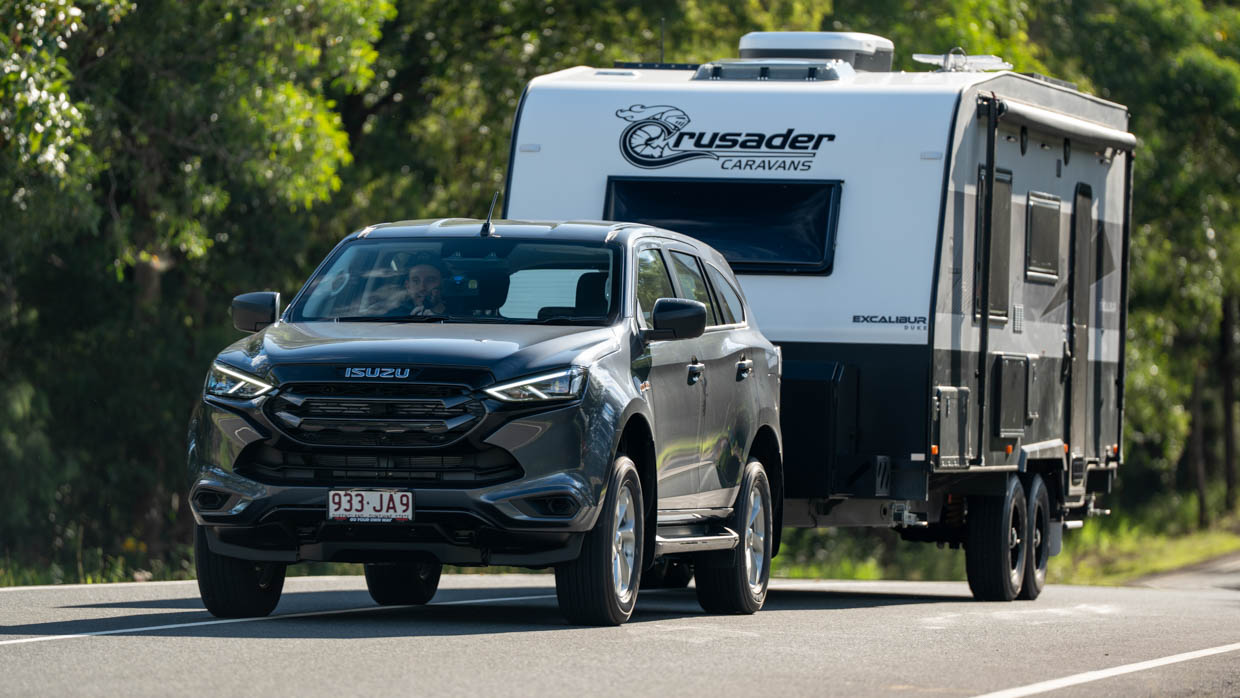
Both engine options are mated to an Aisin six-speed automatic transmission, though the smaller engine is paired with a shorter final-drive ratio.
The rest of the drivetrains remain much the same. A part-time 4WD system with a locking rear differential is standard equipment. Overall, it’s a basic setup, but a proven one.
The handling of the MU-X has always been comfortable and competent but nothing to write home about in terms of dynamics, though with 80kg less hanging over the front axle thanks to the smaller engine, initial turn-in to the corner does feel a touch less laboured.
As a result of the smaller engine, Isuzu has downgraded the towing capacity from 3500kg in the 3.0L to 3000kg in the 1.9L, but that doesn’t tell the whole story.

Gross combination mass – the weight of the vehicle, trailer and payload combined – is the more important figure here, and it manages to slip the punches to a degree.
Although the towing capacity is down 500kg, GCM is down just 400kg, meaning you’ve effectively got up to 735kg of bandwidth for accessories, which is impressive for a coil-sprung wagon such as this.
Chasing Cars is acutely aware of the fact that our initial drive of the 1.9L was conducted exclusively with your reviewer in the car and his trusty laptop as his only payload. Further testing under load and a genuine assessment of real-world fuel economy will be carried out at a later date.
The interior of the MU-X is much the same as it was back when it launched in 2021. But with the subsequent release of new-generation models such as the Ford Everest and soon the next-generation Toyota Land Cruiser Prado, the Isuzu’s cabin space is beginning to look a little bit dated and at times a little frustrating.
Isuzu has taken feedback to heart on a number of these issues I’m about to highlight, and has made a number of improvements to the cabin of the D-Max ute, improvements we expect to follow suit on the MU-X, in time.

But at the present moment, the interior space of the MU-X still packs some solid fundamentals and in some ways is truly class-leading. The front seats are supportive and a low floor height aids comfort levels across all three rows.
The seats in the entry-level LS-M and LS-U grades are dressed in a hard-wearing cloth material while the flagship LS-T features leather upholstery.
Stepping up to the LS-U nets nice upgrades like a power tailgate and dual-zone climate control, but truly lux stuff such as heated and power-adjustable seating doesn’t come until the flagship LS-T.
Still, some decent features like keyless entry, automatic wipers and leather across the dash are a nice touch on the base model.
Decent-size bottle holders are equipped on every door and the centre bin is respectable. A double glove box system is similarly welcome though I did note that the MU-X misses out on the centre dash storage department, which is a shame.
The 7.0-inch multimedia display on the LS-M is a much-maligned system, with its small size, ridiculously bezels and incredibly slow software behind it. On the positive side, it packs wireless Apple CarPlay and wired (only) Android Auto.

A larger 9.0-inch unit is available on the LS-U and above, which solves the size issue but the other frustrations still persist. Slow-charging USB A ports also dot the cabin when USB C is quickly becoming the norm on new vehicles.
Moving into the second row reveals an impressively large space with good visibility and solid leg room, even behind my 182cm driving position. A complement of grab handles, that manage to be both easily accessible yet not in the way, is ideal for when the going gets tough.
If there is anywhere the MU-X is class-leading it has to be the third row. The amount of space is more generous than many unibody vehicles we’ve reviewed, let alone a body-on-frame SUV such as this.
Isuzu has also fitted air vents in both the second and third rows, so the experience in the feels in the back is far less claustrophobic. Parents with young babies strapped into rearward-facing baby seats will also appreciate the ability to direct these vents onto the faces of their young ones.
The boot is another strong point of the MU-X with 311-litres available in standard form, meaning there is still plenty of room available even when all seven seats are up. That’s something that can’t be said for the likes of the Pajero Sport or even the considerably more expensive Toyota Land Cruiser 300 Series.
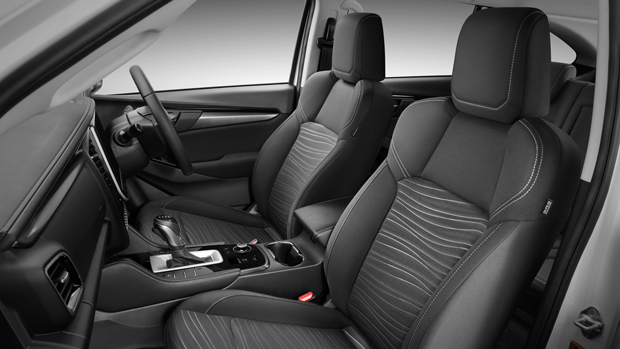
Folding down the third row (which stows completely flat) expands to a huge 1119-litres or 2138-litres if row two follows suit. A full-size spare is under-slung.
Like the 3.0L turbo-diesel, the 1.9L carries a five-star rating from ANCAP that was awarded back in 2022.
The second-generation MU-X made great strides in this department, not least due to the fact that airbag coverage extends across all three rows. That’s something not featured on the ageing Pajero Sport, for example.
During the 2022 resting, the MU-X was awarded the following scores:
In our first local launch drive with the 1.9L, Chasing Cars wasn’t able to conduct a complete assessment of the safety equipment and how it performed on the road, though previous experience suggests that aside from overzealous traction control and lane-keep assistance, the overall tuning is adequate.
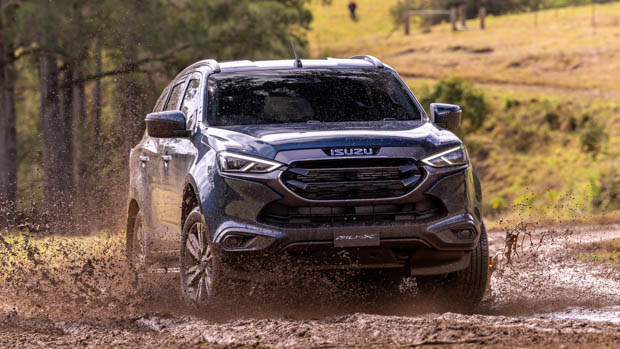
Respectably, Isuzu fits almost safety equipment on the base model up, which includes the following:
Front parking sensors and a tyre pressure monitoring system are added on the LS-U and LS-T grades. The reversing camera is also notably of quite poor quality.
Missing from the family-friendly arsenal is reversing AEB, a feature that we would highly recommend if the MU-X was to fill such a role.
The most convincing selling point for the 1.9L turbo-diesel is the fact its average consumption claim is 7.4L/100km and unlike the 3.0L, which is 7.8L/100km in the 4×2 and 8.3L/100km in the 4×4.
Clearly, there is no claimed fuel economy penalty for going for the 4×4 version in 1.9L guise.
On the highway, Isuzu says buyers will see a pretty narrow difference of 6.7L/100km in the 1.9L compared to the 6.8L/10km in the 3.0L 4×2, a gap which widens to 7.2L/100km if you go for the 4×4. A much wider gap is seen around town.

Drawing from the same-size 80-litre tank on both engine types, the 1.9L has the theoretical capability to travel 1081km in combined conditions – 118km more than the 3.0L 4×4.
Over in Thailand, a version of this 1.9L coupled with a 48-volt mild-hybrid system has been shown, but Isuzu Ute Australia didn’t appear overly keen to bring it to Australia. It’s a shame really as a similar system fitted to the Hilux has shown to offer a 10 percent increase in efficiency.
If Isuzu was able to replicate such fuel efficiency gains, it could double-down on the strengths of this 1.9L engine and also aid potential complications with its vehicle emissions.
A 4×4 version of the 1.9L turbo-diesel puts out 196 grams/km of CO2 compared to 220 in the 3.0L, the gains are small for sure but as looming NVES standards threaten to punish car companies with fines for heavy-emitting vehicles, the larger engine could be under threat far sooner than the new arrival.
Isuzu continues to offer a six-year/150,000km warranty, which effectively limits drivers to drive less than 25K a year, though this is more generous ownership credentials than Ford or Toyota. Mitsubishi offers a longer warranty period for its Pajero Sport, but on the condition you stick with its dealership network for servicing.
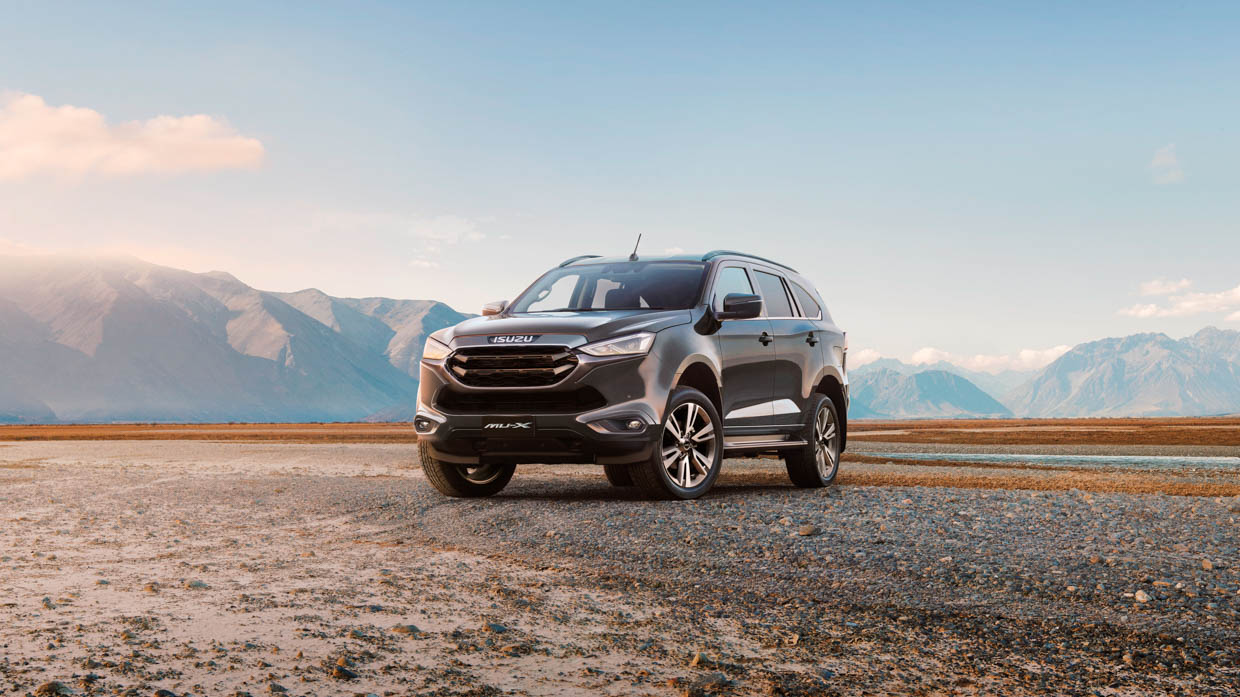
For 2024, Isuzu has switched up its capped price serving program from a six-year/150,000km cap to a shorter five-year/75,000km period.
The plus side of this shorter coverage is that servicing costs are $310 cheaper over the latter period, totalling $2245 during that time. Intervals are capped at 12 months or 15,000km.
When looking at the two engines side by side, the 1.9L proves itself to be a good addition to the MU-X range with objective advantages such as its better fuel economy and longer range making for a tempting proposition.
But with just $2000 between the two, it’s hard to justify the 1.9L when its use case is far more limited than the 3.0L. A car is a long-term investment and buyer wants and requirements do change across the ownership experience.

The larger of these two engine options has a greater depth of capability and is likely to be far more confident when the going gets tough. Further, the jury is still out as to whether the 1.9L proves to be more efficient when pushed at its towing and family-hauling limits.
It’s notable that Isuzu hasn’t fitted the 1.9L to the top-spec LS-T and in truth the base grades are probably where it’s best served.
In LS-M 4×4 guise ($53,400 before on-roads), this new engine makes a lot of sense if what you want is a rough-and-tumble adventure rig with an affordable asking price and solid fundamentals.
But if you want anything more, the faithful 3.0L remains the king of the Isuzu hill.
About Chasing cars
Chasing Cars reviews are 100% independent.
Because we are powered by Budget Direct Insurance, we don’t receive advertising or sales revenue from car manufacturers.
We’re truly independent – giving you Australia’s best car reviews.
The estimate provided does not take into account your personal circumstances but is intended to give a general indication of the cost of insurance, in order to obtain a complete quote, please visit www.budgetdirect.com.au. Estimate includes 15%^ online discount.
^Conditions Apply
Budget Direct Insurance arranged by Auto & General Services Pty Ltd ACN 003 617 909(AGS) AFSL 241 411, for and on behalf of the insurer, Auto & General Insurance Company Limited(ABN 42 111 586 353, AFSL 285 571).Because we don’t know your financial needs, we can’t advise you if this insurance will suit you. You should consider your needs and the Product Disclosure Statement before making a decision to buy insurance. Terms and conditions apply.
Indicative quote based on assumptions including postcode , 40 year old male with no offences, licence suspensions or claims in the last 5 years, a NCD Rating 1 and no younger drivers listed. White car, driven up to 10,000kms a year, unfinanced, with no modifications, factory options and/or non-standard accessories, private use only and garaged at night.
^Online Discounts Terms & Conditions
1. Discounts apply to the premium paid for a new Budget Direct Gold Comprehensive Car Insurance, Third Party Property Only or Third Party Property, Fire & Theft Insurance policy initiated online on or after 29 March 2017. Discounts do not apply to optional Roadside Assistance.
2. Discounts do not apply to any renewal offer of insurance.
3. Discounts only apply to the insurance portion of the premium. Discounts are applied before government charges, taxes, levies and fees, including instalment processing fees (as applicable). The full extent of discounts may therefore be impacted.
4. We reserve the right to change the offer without notice.